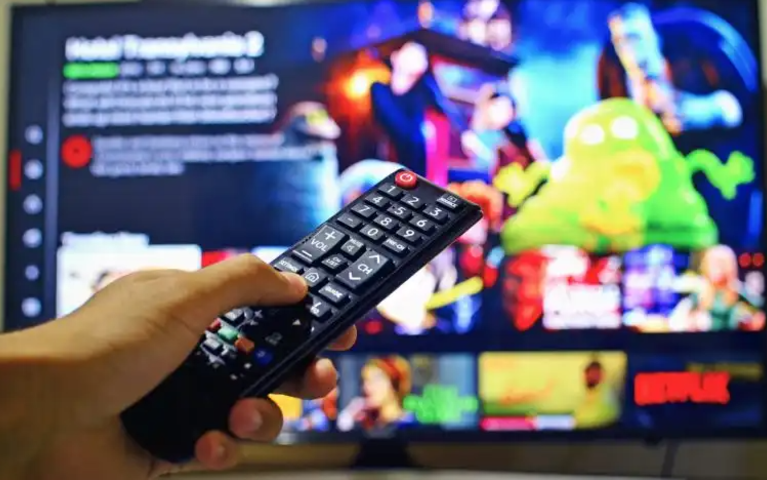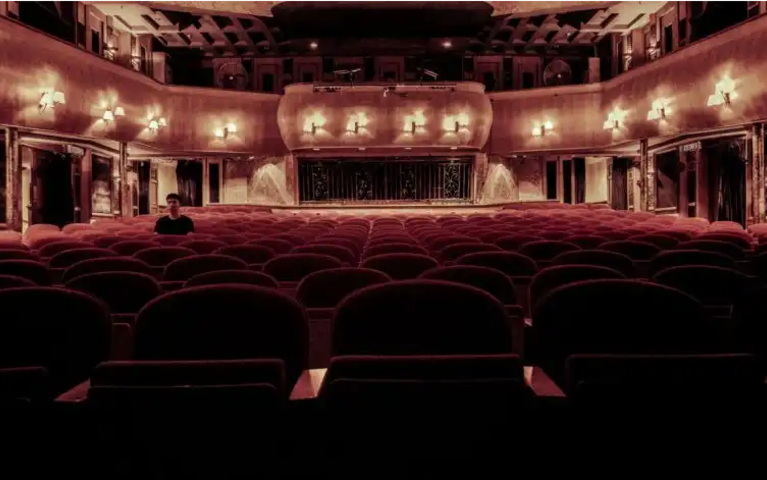The Impact of Digital Revolution on the Movie Industry; Is It a Fad or a Reality?

In his Off Camera with Sam Jones interview, TV star Chris O’Dowd accurately depicted that “people talk about what they watch on Netflix more than they talk about how their sister is doing. We are the reason for that. We are the great pirates of non-human emotion!”. We currently have access to an unprecedented amount of visual content. The technology of content arriving so easily at the hands of the viewer through the information superhighway, famously known as the internet, has revolutionized the way media and entertainment are obtained. It further paved the way for a renaissance in the visual culture arena. Social media, video sharing websites, streaming services along with the portable attention-devouring devices remarkably altered the film and television watching experience.
The economy, comfort and convenience associated with watching content on-the-go are gradually morphing film, especially in its art-house independent form, only appreciated by a limited audience. Perhaps the most common living example of such transformation is Netflix, today’s giant of TV streaming, which initially started as a mail order DVD business. Through its DVD service, the tech giant had long delivered all kinds of content including art house and independent films. Yet, the convenience of streaming online had shifted Netflix’s subscribers away from ordering DVDs, leading the company to narrow down its US DVD distribution hubs from 50 in 2016 to only 17 in 2018. The contraction in that service has thus limited the content that suitably makes its way to the viewer only to what is allowed to be displayed within the rubrics of Netflix’s distribution model. This resulted in limiting the easy and convenient access to film, only to what is available on Netflix’s data streaming platform.
![]()
The withering Netflix DVD business is best put in words by a former Netflix employee who indicated to CNBC (Consumer News and Business Channel) that Netflix’s DVD business is foreseen only to survive until 2025. “They’re just trying to slow the bleeding and allow it to die off naturally,” he reported.
The distribution model, pertinent to streaming devices online, is by no means compatible with that demanded by traditional film theaters. The tech giant comes back as a solid example in this case. Netflix’s existence in 2018’s Cannes Film Festival was put at stake because of its ephemeral on-demand release dates. French cinemas mandated waiting for 36 months prior to releasing a film playing on its venues in streaming platforms. Netflix was by no means able to accommodate subscribers. Christophe Tardieu, director of the French National Cinema Center (CNC), named Netflix “the perfect representation of Cultural Imperialism”. Streaming devices, without doubt, have come to be perceived as pausing a threat at the very nature of cinema, as an art form that needs to be collectively experienced in the palace where it’s ought to be screened: the movie theater.
The Cannes/Netflix dispute conveys the clash of cultures between what the norm has become and what the classical decorum dictates. This year, Cannes’ chief Artistic Director Thierry Frémaux announced a ban on Netflix that prevents it from officially competing for the prestigious Palme d’Or. Due to the Festival’s distribution requirements, and the threat prompt entertainment pauses on art-house film existence, the festival welcomed the tech giant to only screen its productions. To preserve his giant’s dignity, Ted Sarandos, Netflix’s Chief Content Officer, decided quitting. “We hope that they do change the rules. We hope that they modernize. But we will continue to support all films and all filmmakers. We encourage Cannes to rejoin the world cinema community and welcome them back,” the CCO told Variety. “Thierry (Frémaux) had said in his comments, when he announced his change, that the history of the Internet and the history of Cannes are two different things. Of course, they are two different things. But we are choosing to be about the future of cinema. If Cannes is choosing to be stuck in the history of cinema, that’s fine.” Frémaux, had recently commented on that dispute during a talk with filmmaker Antonio Mondana at the Rome Film Festival. “My job is to show the state of cinema in a time in which Martin Scorsese is about to release a movie produced by Netflix. In 2017, the board of the festival asked me not to accept any more movies that won’t screen in theatres. This isn’t strange if you think that exhibitors are in that board. And they are right to be preoccupied by this trend,” he explained.
![]()
At a spectator level, there is a lot more that makes a visit to the movie house more encumbering, especially when movies have become accessible in every house. Having compatible entertaining content available within a click’s reach, and with remarkably less to pay, wards off the choice of fitting in a visit to the movie theater within the busy schedule of an individual. The subscription models of those streaming services allow for access to an infinite amount of content with a minimum monthly cost, decreasing the number of theater entries. In a recent episode, Justine Hollister the presenter of Screen Thoughts called on her listeners to buy the theater out so as to encourage a wider audience to go and watch Love, Simon. “Run see this film, and also, if you can, buy the theater out. Maybe this is going to be a new thing; hashtag Movies that Matter, people will start buying theaters out!” She said. Her encouragement comes from her assumption that people who can’t really afford to go to the movies will be encouraged to check out movies that matter this way.
That transformation had further influence on expanding and altering the rubrics associated with TV. Time slots, programming grids, prime time concepts, TV channels and the anguish of having to wait for the following week to know what is going to happen next were all beaten up by the singular concept of binge watching introduced by online streaming services. Netflixonomics is a term coined by the Economist that describes a winner-take-nearly-all theory, achieved by having people subscribe to television on the internet and allowing them to a personalized full span of content and wide distribution. That very breadth of distribution is taking Netflix towards becoming a global network. “In the long term, what we worry about is how can we be a good global citizen when we’re very large in many countries. We’ll have to figure that out show by show, country by country, while trying to stay ahead of countries’ expectations”, Reed Hastings, Netflix’s co-Founder, Chairman and Chief Executive Officer tells Gady Epstein in Money Talks. This was put to implementation when Netflix has embarked on investing in productions that speak various languages. Amongst many others are Dark in German, Osmosis in French, Kingdom in Korean, Followers in Japanese, The Protector in Turkish, and Jinn the first Arabic Netflix series that just completed.
That very “ethos” of Netflix being a global citizen by bringing in a global TV network has yet expanded to influence the international production at the creative/implementation level. Not only had it led to the migration of some of the finest writing from cinema to TV, but it had also brought in new professional roles. It had, for instance, globalized a concept that was once reserved for Hollywood productions: the showrunner concept. Like Europe, the Middle East, for example, has long depended on the producer/director dynamics. Now, these regions are buying into hiring a showrunner; an entity that has the overall creative authority and responsibility over the program.
Whether the future entails cutting cable cords or unsubscribing to satellite networks, and even if it meant less visits to the movie theaters and more screen time on a portable device, the need for storytelling will never perish. Likewise, the charm associated with immersing spectators in a story that unfolds on a big screen should maintain the status of cinema as the fundamental art of storytelling, the doors of which would never shut and the lights of which would never faint. After all, cinema as the seventh art, is impervious to new waves and shifting trends.














